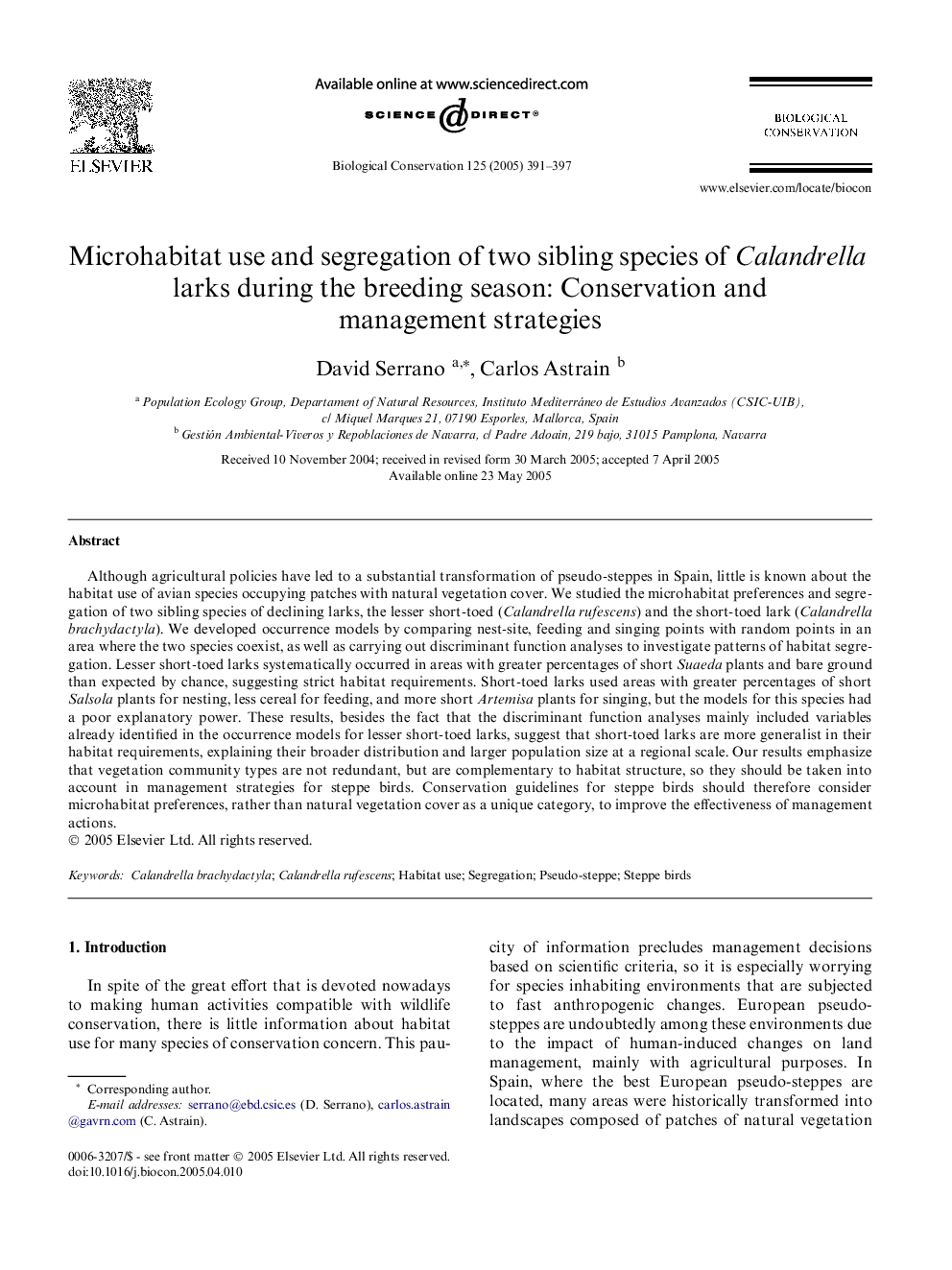| کد مقاله | کد نشریه | سال انتشار | مقاله انگلیسی | نسخه تمام متن |
|---|---|---|---|---|
| 9446005 | 1304641 | 2005 | 7 صفحه PDF | دانلود رایگان |
عنوان انگلیسی مقاله ISI
Microhabitat use and segregation of two sibling species of Calandrella larks during the breeding season: Conservation and management strategies
دانلود مقاله + سفارش ترجمه
دانلود مقاله ISI انگلیسی
رایگان برای ایرانیان
موضوعات مرتبط
علوم زیستی و بیوفناوری
علوم کشاورزی و بیولوژیک
بوم شناسی، تکامل، رفتار و سامانه شناسی
پیش نمایش صفحه اول مقاله

چکیده انگلیسی
Although agricultural policies have led to a substantial transformation of pseudo-steppes in Spain, little is known about the habitat use of avian species occupying patches with natural vegetation cover. We studied the microhabitat preferences and segregation of two sibling species of declining larks, the lesser short-toed (Calandrella rufescens) and the short-toed lark (Calandrella brachydactyla). We developed occurrence models by comparing nest-site, feeding and singing points with random points in an area where the two species coexist, as well as carrying out discriminant function analyses to investigate patterns of habitat segregation. Lesser short-toed larks systematically occurred in areas with greater percentages of short Suaeda plants and bare ground than expected by chance, suggesting strict habitat requirements. Short-toed larks used areas with greater percentages of short Salsola plants for nesting, less cereal for feeding, and more short Artemisa plants for singing, but the models for this species had a poor explanatory power. These results, besides the fact that the discriminant function analyses mainly included variables already identified in the occurrence models for lesser short-toed larks, suggest that short-toed larks are more generalist in their habitat requirements, explaining their broader distribution and larger population size at a regional scale. Our results emphasize that vegetation community types are not redundant, but are complementary to habitat structure, so they should be taken into account in management strategies for steppe birds. Conservation guidelines for steppe birds should therefore consider microhabitat preferences, rather than natural vegetation cover as a unique category, to improve the effectiveness of management actions.
ناشر
Database: Elsevier - ScienceDirect (ساینس دایرکت)
Journal: Biological Conservation - Volume 125, Issue 3, October 2005, Pages 391-397
Journal: Biological Conservation - Volume 125, Issue 3, October 2005, Pages 391-397
نویسندگان
David Serrano, Carlos Astrain,